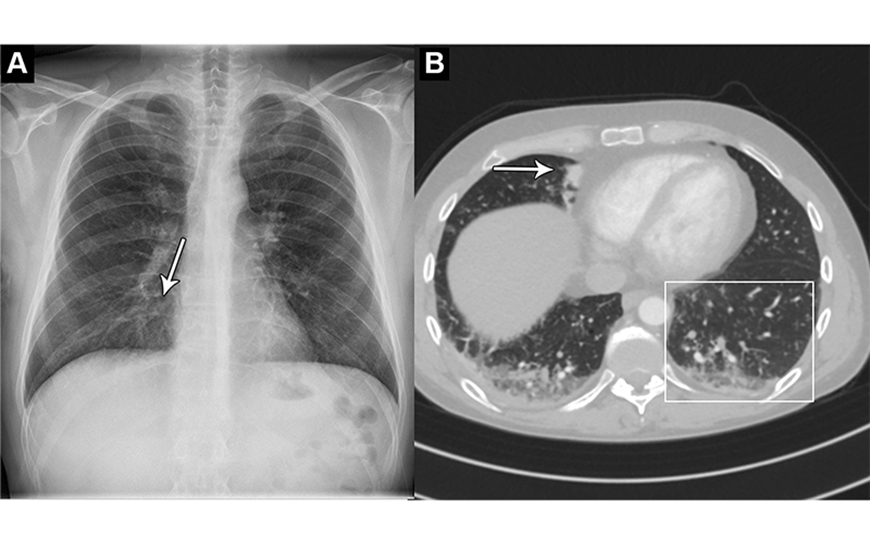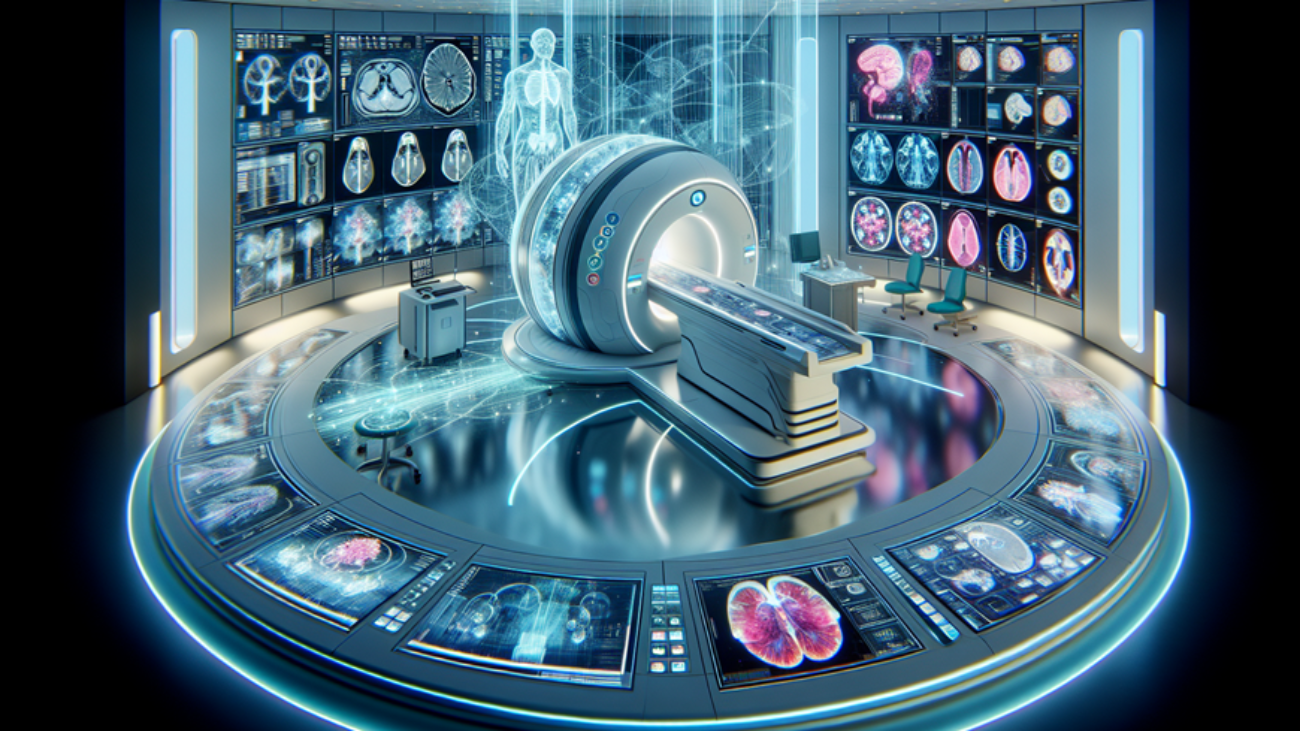Artificial intelligence in radiology is revolutionizing the field of medical imaging. The integration of AI technology has an impact on various aspects of radiological practice, from image interpretation to workflow optimization. As healthcare systems worldwide grapple with increasing imaging volumes and complexity, AI in radiology offers promising solutions to enhance efficiency, accuracy, and patient care.
The benefits of AI in radiology are far-reaching and transformative. This article explores how AI radiology imaging improves image quality, streamlines reporting processes, and facilitates multi-modal image integration. Additionally, it delves into the role of AI in predictive analytics for patient care, showcasing the potential of artificial intelligence radiology to shape the future of medical diagnostics. By examining these advancements, readers will gain insights into how AI is reshaping the landscape of radiological practice and contributing to better healthcare outcomes.
Enhanced Image Quality

Artificial intelligence (AI) has revolutionized the field of radiology by significantly improving image quality. This enhancement has an impact on various aspects of medical imaging, from image reconstruction to noise reduction and resolution enhancement.
AI-Based Image Reconstruction
Deep learning, a subset of machine learning, has become an integral factor in AI solutions developed for medical imaging applications. It uses layers of information processing to gradually learn more complex representations of data, replicating human intelligence. The convolutional neural network, considered state-of-the-art in image analysis, is used as an AI solution for advanced image reconstruction
Deep learning reconstruction (DLR) has introduced a new way to improve image quality without increasing patient radiation dose or reconstruction time. DLR algorithms use a deep convolutional neural network (DCNN) to recognize and remove noise patterns from raw data or reconstructed CT images [2]
This technique has shown the ability to improve in areas where iterative reconstruction (IR) is lacking, such as reducing noise magnitude without significantly altering noise texture.
Several commercial DLR algorithms are available, such as AiCE (Canon Medical Systems) and TrueFidelity (GE Healthcare). These algorithms learn to predict high-quality, low-noise model-based image reconstruction from lower quality input reconstructed from the same underlying sinogram data [3]
Resolution Enhancement
AI algorithms have also shown promise in enhancing image resolution. For instance, Canon’s second-generation DLR called Precise IQ-Engine (PIQE) incorporates unique data acquired on a high-resolution CT scanner. This allows the algorithm to better remove image noise while preserving object boundaries, rendering traditional CT images to have spatial resolution equivalent to those acquired on a high-resolution detector system.
In MRI, deep learning reconstruction is changing patient care by fundamentally shifting the balance between image quality and acquisition time. More than 6 million patients have benefited from this technology so far.
While these advancements are promising, it’s important to note that there are potential pitfalls. The lack of control over what priors are used by deep learning models when reconstructing images may lead to inductive biases. For example, some studies have shown that deep learning reconstruction on MRIs can remove small structural changes.
Therefore, as the field continues to advance, the radiology community should embrace new developments to improve patient radiation safety while remaining vigilant and conducting studies to ensure that actual pathology is not obscured.
Automated Reporting and Documentation
Artificial intelligence (AI) has revolutionized the field of radiology by enhancing automated reporting and documentation processes. This advancement has significantly improved the efficiency, accuracy, and standardization of radiological reports.
Natural Language Processing in Radiology
Natural Language Processing (NLP) techniques have emerged as a powerful tool in radiology, enabling the extraction of structured information from free-text radiological reports. By analyzing and interpreting natural language data, NLP algorithms can identify relevant information such as patient demographics, clinical history, imaging findings, and impressions.
This capability has far-reaching implications for clinical practice and research.
NLP algorithms have demonstrated their effectiveness in detecting specific diagnoses within radiology reports. For instance, they have been successfully used to identify osteoporotic skeletal fractures and thromboembolic diseases from aggregate reports [6] https://pubs.rsna.org/doi/full/10.1148/rg.2021200113. This ability to analyze vast amounts of reports at large medical institutions opens up new possibilities for answering clinical and research questions efficiently.
Standardized Reporting
The integration of AI applications into radiology reporting has the potential to enhance the clarity, accuracy, and quality of reports while reducing variability.
Standardized reporting formats, developed by organizations like the European Society of Radiology (ESR), ensure uniformity in reporting and facilitate structured data extraction.
AI-powered systems can automatically populate recommendations for follow-up of incidental findings, improving patient care and reducing variability in radiologist recommendations.
Furthermore, AI algorithms have been developed to automate tasks associated with various scoring systems, such as Thyroid Imaging Reporting and Data System (TI-RADS) and Breast Imaging Reporting and Data System (BI-RADS), enhancing consistency in lesion measurement, image segmentation, and comparison with prior images.
Error Reduction in Documentation
These algorithms detect and characterize findings, improving consistency and facilitating standardized report creation.
NLP models have been developed as smart assistants to support radiologists during the reporting process. For example, a tool has been created that detects when a radiologist is reporting a fracture and displays additional information regarding pertinent classifications, associated injuries, and further clinical recommendations.
This additional layer of analysis not only streamlines the workflow but also enhances report clarity and quality.
The implementation of AI in radiology reporting has shown promising results. In a study evaluating AI-generated radiology reports, the average comprehension score for patient-friendly reports significantly increased to 4.69 ± 0.48 compared to 2.71 ± 0.73 for original reports.
This improvement in comprehension demonstrates the potential of AI to enhance communication between healthcare providers and patients.
While the benefits of AI in automated reporting and documentation are substantial, it is important to note that there are still challenges to overcome. For instance, the study reported 1.12% artificial hallucinations and 7.40% potentially harmful translations in AI-generated reports.
These percentages, although relatively low, cannot be disregarded in the medical field, which relies heavily on accuracy and truthfulness.
As the field continues to advance, the radiology community must embrace these new developments while remaining vigilant and conducting thorough studies to ensure that AI-assisted reporting enhances patient care without compromising accuracy or introducing new risks.
Conclusion
The integration of AI in radiology has a profound impact on the field, ushering in a new era of medical imaging. From boosting image quality to streamlining reporting processes, AI is changing the game in patient care. What’s more, its ability to combine different imaging modalities and predict patient outcomes is opening up new possibilities to improve diagnoses and treatments.
As we look ahead, it’s clear that AI will continue to shape the future of radiology. While there are challenges to overcome, the potential benefits for patients and healthcare providers are huge. By embracing these advances and staying vigilant, the radiology community can harness AI’s power to enhance patient care and push the boundaries of medical imaging.
FAQs
What advantages does AI offer in medical imaging?
AI significantly enhances the precision and efficiency of diagnosing diseases within medical imaging. It aids healthcare professionals by improving the detection of abnormalities, recognition of specific anatomical structures, and prediction of disease progression.
In what ways can AI enhance the field of radiology?
AI can automate tasks that are considered lower in value, allowing radiologists to dedicate more time to critical aspects of their work. According to Menard, proper implementation of AI could increase productivity and job satisfaction while preserving the quality of radiologic care.


Add a Comment